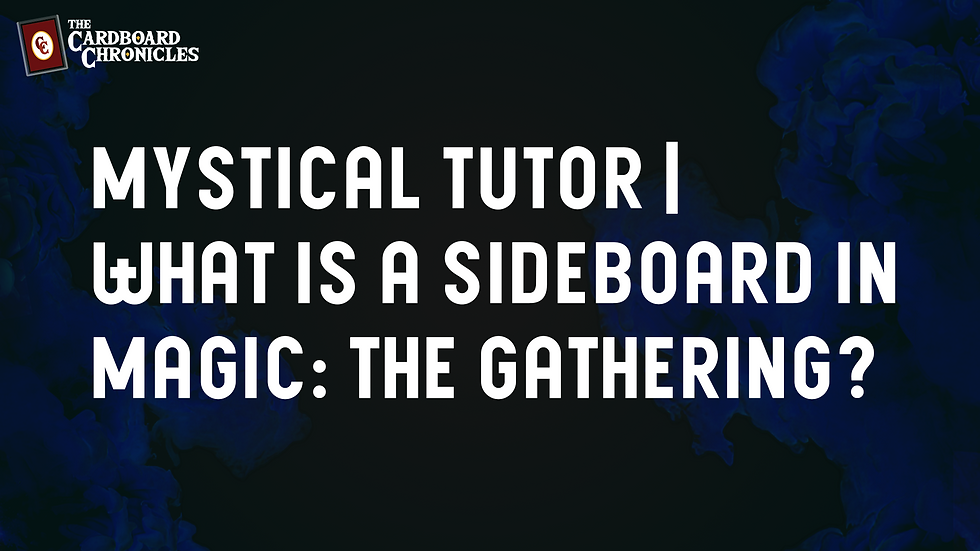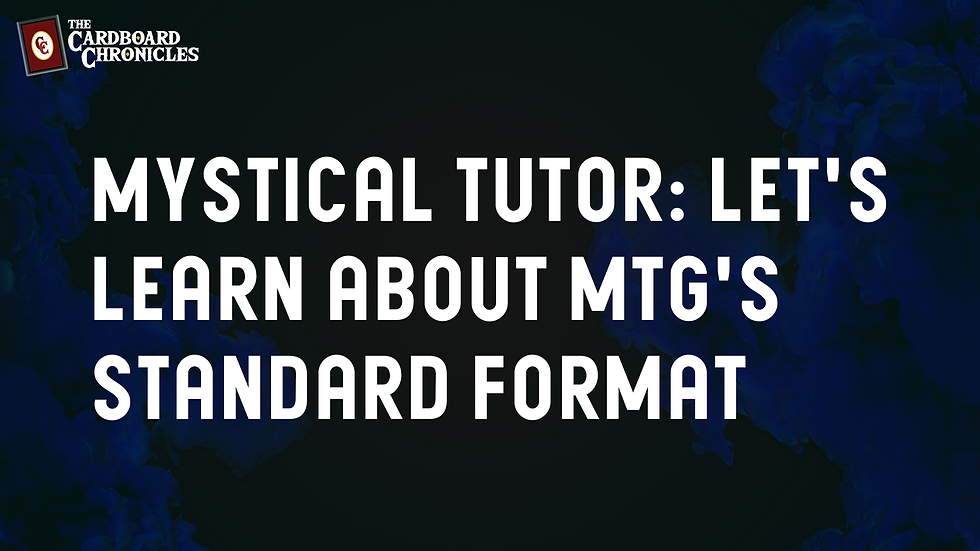Mystical Tutor | Magic: The Gathering Rules Resources
- Greg Montique

- Jun 16
- 4 min read
As a player just starting on their MTG journey, never forget this one simple fact: Magic the Gathering rules are deep, complex, and sometimes delightfully strange. As someone who's been playing for years and still finds surprises in the rulebook, I can tell you this game has a rabbit hole of interactions and edge cases. Let's explore the best Magic the Gathering rules resources to help you navigate it all, plus three of the more obscure rules that even experienced players sometimes miss.
The Best Rules Resources for Magic: the Gathering
1. The Comprehensive Rules Document (CRD)
This is the master list of every rule in Magic. It's updated with every major set release and includes everything from turn structure to edge case interactions. You can find it on Wizards of the Coast's website under their Rules section. It's not exactly light reading, but it’s the most accurate source when things get weird. Great for rules lawyers and anyone who wants to dive deep into the mechanics.

Best For: Competitive players, judges, and anyone who wants to settle a dispute definitively.
2. Cranial Insertion
This is a long-running column written by certified Magic judges that answers reader-submitted rules questions. It's written in plain English, covers everything from beginner to expert questions, and is often pretty entertaining. You’ll find it at cranialinsertion.com.

Best For: Learning rules through examples, gaining practical understanding.
3. Rules Q&A on MTG Salvation (Archive) and Reddit's r/mtgrules
MTG Salvation's forums contain a goldmine of older rulings and discussions. For up-to-date answers, r/mtgrules on Reddit is a great community where experienced players and judges chime in daily.
Best For: Getting quick feedback on weird card interactions or stack questions.
4. Magic Judge Rules Wiki
This is more technical than most casual players need, but it's extremely helpful if you're studying for a judge exam or just curious about behind-the-scenes reasoning. It breaks down things like replacement effects, layers, and priority timing with clear examples.
Best For: Aspiring judges and players who love precision.
5. Your LGS’s Judge or Resident Expert
Honestly, nothing beats a conversation. Most Local Game Stores (LGS) have a judge or knowledgeable player who can walk you through tough interactions. Asking someone in person (or over Discord or Messenger) often leads to a clearer, faster understanding than poring over a rulebook.
Best For: Real-time help, casual rules disputes, and social learning.
Three of the Most Obscure Magic the Gathering Rules
Ninjutsu After First-Strike Damage
You know how creatures with first strike deal damage before others in combat? Here’s a cool trick: if your non-ninja creature hits with first strike damage, you can ninjutsu in one of your ninjas after damage is dealt—even during the second combat damage step. That means you can swap in, say, Ninja of the Deep Hours after Battlefield Raptor lands its hit. That ninja sneaks in for an extra hit during regular damage, effectively surprising your opponent with a two-for-one. It’s a timing play that only works because of how the two combat damage steps happen.
Reanimate and “Last Known Information” Counters
Imagine you’re reanimating Golgari Grave‑Troll from your graveyard. It gains +1/+1 counters equal to mana costs of creatures that were in your graveyard. Turns out you do get it with a counter—even though it’s not in the graveyard right now—because the game checks last known information. Before Reanimate resolves, the Troll was in your graveyard, so it counts itself and enters with the appropriate number of counters. That’s how “last known information” can sneakily mess with our assumptions.
Morph Doesn’t Use the Stack, But It's effects Can Still Be Countered
Here's a sneaky trick that trips up new players: turning a creature face-up with morph doesn’t use the stack. That means your opponent can't respond to it once you've decided to do it—no “countering” the flip itself with a Stifle or a Disallow. But—and here's the twist—they can respond before the creature is flipped if you let priority pass, or they can respond to what happens after it's turned face-up.
Let’s say you’re flipping Willbender to change the target of a spell. Once it’s face-up, the ability to redirect a spell does go on the stack—and that part can be responded to. So morph is both untouchable in the moment and still fair game afterward, depending on timing.
Embrace the Weirdness
Learning the Magic the Gathering rules is a bit like learning a second language. It’s not always intuitive, it can be frustrating, and there are exceptions to every rule. But once you get comfortable with the basics and know where to find help, you’ll start to see the elegance in how the game holds itself together—even when it’s held together by a stack of conditional triggers and state-based actions.
If you’re ever unsure, don’t be afraid to ask. This community is full of people who love explaining weird card interactions just as much as they love playing the game itself.










Comments